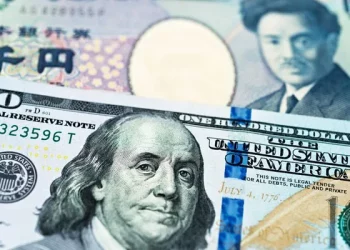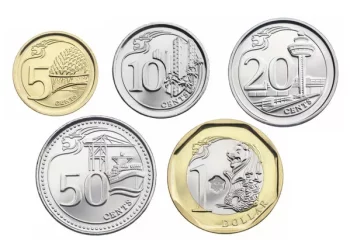In today’s globalized economy, currency exchange plays a crucial role in enabling international trade, investment, and travel. One of the most frequently discussed currency pairs in the foreign exchange (Forex) market is the Indian Rupee (INR) against the US Dollar (USD). For individuals, businesses, and traders alike, understanding how to convert 6000 rupees into dollars, and the broader implications of this exchange, can provide valuable insights into the workings of the forex market. In this article, we will explore how to convert 6000 rupees into US dollars, the factors influencing currency exchange rates, and strategies that forex traders employ to profit from currency fluctuations.
Understanding Currency Conversion: 6000 Rupees to Dollars
To begin with, converting 6000 rupees (INR) into US dollars (USD) depends primarily on the current exchange rate between the Indian Rupee and the US Dollar. The exchange rate is essentially the value of one currency in terms of another, and it fluctuates due to various factors, such as economic conditions, interest rates, geopolitical events, and market sentiment.
At the time of writing, the exchange rate for INR to USD might stand around 1 USD = 83 INR (please note, this rate fluctuates daily). This means that if you were to convert 6000 rupees into dollars:
6000 INR÷83 INR/USD=72.29 USD
So, 6000 Indian Rupees would convert to approximately 72.29 US Dollars. However, this value is subject to change as the exchange rate is dynamic and can be influenced by global financial events and market activities.
The Factors Affecting the INR/USD Exchange Rate
The exchange rate between two currencies is influenced by a myriad of factors. Understanding these factors helps in predicting trends in the forex market and making informed trading decisions.
Interest Rates: Central banks, such as the Reserve Bank of India (RBI) and the Federal Reserve in the United States, play a significant role in setting interest rates. Higher interest rates in a country typically lead to an appreciation of its currency because it attracts foreign investors seeking higher returns. For example, if the US Federal Reserve raises interest rates, the USD may strengthen against other currencies, including the INR.
Economic Indicators: Key economic indicators like GDP growth, inflation, unemployment rates, and consumer confidence impact the strength of a currency. If India’s economy is growing rapidly, the INR might appreciate, whereas if the US economy shows signs of strength, the USD could become more valuable.
Political Stability and Geopolitical Events: Political stability influences investor confidence. For instance, if India experiences political unrest, it could lead to a depreciation of the INR as foreign investors may move their capital elsewhere. Similarly, geopolitical tensions involving the United States could result in fluctuations in the value of the USD.
Trade Balances: The balance of trade — the difference between a country’s exports and imports — also affects currency values. A country with a trade surplus (more exports than imports) will often see its currency appreciate as foreign buyers purchase more of its goods and services, increasing demand for the domestic currency.
Market Sentiment and Speculation: Forex markets are heavily influenced by investor sentiment and speculation. If traders believe that the INR will strengthen against the USD due to positive economic data from India, they may begin buying INR, which could cause the rupee to appreciate.
Supply and Demand: At its core, currency exchange is governed by supply and demand. If there is higher demand for US dollars (for trade, investment, or other purposes), the value of the dollar will rise relative to other currencies, including the rupee.
How Forex Traders Can Capitalize on Currency Movements
Forex trading involves buying one currency while simultaneously selling another. Traders in the forex market engage in speculative trading with the hope of making profits based on the movements of exchange rates. To capitalize on currency fluctuations, traders employ various strategies and tools.
Technical Analysis: Technical analysis involves studying historical price data and identifying patterns or trends that might repeat in the future. Traders use chart patterns, moving averages, and technical indicators like the Relative Strength Index (RSI) or Moving Average Convergence Divergence (MACD) to forecast the potential direction of the currency pair.
For example, a trader might analyze the INR/USD currency pair chart to identify potential support and resistance levels. If the exchange rate is approaching a support level, the trader may expect the rupee to strengthen against the dollar, and vice versa.
Fundamental Analysis: Fundamental analysis focuses on the economic, social, and political factors that influence the value of currencies. Traders who use this approach will monitor economic indicators, central bank policies, geopolitical events, and other macroeconomic factors. For instance, if the Federal Reserve announces an interest rate hike, traders might expect the USD to appreciate, prompting them to buy USD against the INR.
Carry Trading: Carry trading is a popular strategy where traders borrow a currency with a low interest rate and invest in a currency with a higher interest rate. In the case of the INR/USD pair, if interest rates are higher in India compared to the US, traders might borrow USD and exchange it for INR to earn the interest rate differential. However, this strategy carries the risk of exchange rate fluctuations and geopolitical events that could impact the value of the currency.
Scalping: Scalping is a short-term trading strategy where traders aim to make small profits from frequent trades based on small price movements. Scalpers who trade the INR/USD pair would seek to take advantage of slight price fluctuations during the day, executing multiple trades to accumulate small profits.
Swing Trading: Swing traders hold positions for a few days or weeks, aiming to profit from short- to medium-term price movements. A swing trader might buy INR when it is undervalued against the USD, holding the position until the currency pair strengthens. Conversely, they may sell INR if they expect the currency to weaken against the USD.
Hedging: For businesses or investors who deal with foreign currency, hedging is a risk management strategy. Hedging can help mitigate the risk of adverse currency movements by locking in exchange rates. For instance, if a business in India is expecting payments from the US in six months, it may use a hedging instrument to lock in the current exchange rate and protect itself from unfavorable movements in the INR/USD pair.
The Importance of Timing in Currency Trading
One of the most critical aspects of forex trading is timing. Currency prices can be volatile and subject to sudden shifts based on news, economic reports, or market sentiment. For traders looking to convert 6000 rupees into dollars, timing the market correctly can make a significant difference in the value of their conversion.
Market Open and Close Times: The forex market is open 24 hours a day, five days a week, but trading volumes and volatility tend to vary depending on the time of day. The best times to trade the INR/USD pair are often during the overlap of major forex trading sessions, particularly when the Asian and European markets or the European and US markets overlap.
Economic Data Releases: Scheduled economic data releases, such as GDP reports, unemployment numbers, or central bank meetings, can have a substantial impact on exchange rates. Traders often use an economic calendar to track when such data will be released to anticipate possible market reactions.
Geopolitical Events: Unexpected geopolitical events, such as political elections, conflicts, or natural disasters, can cause sharp fluctuations in currency prices. Forex traders need to stay informed about global news and events that could influence the value of the INR or USD.
Risks Involved in Forex Trading
Forex trading offers significant opportunities for profit, but it also carries substantial risks. Currency exchange markets are highly volatile, and the potential for loss can be significant, especially with leverage. Some of the risks involved in forex trading include:
Leverage Risks: Forex trading allows traders to use leverage, which means they can control a large position with a relatively small investment. While leverage can amplify profits, it can also increase losses, leading to the possibility of losing more than the initial investment.
Volatility: Forex markets are known for their volatility, and prices can swing rapidly in either direction. Sudden market movements can result in substantial gains or losses, depending on the direction of the trade.
Political and Economic Risks: Currency values are sensitive to political changes, economic instability, and geopolitical events. Traders need to be aware of risks such as government policy changes, economic recessions, or international conflicts that can drastically impact exchange rates.
Conclusion
Converting 6000 rupees into US dollars is a simple process that hinges on the prevailing exchange rate, which is influenced by numerous economic, political, and market factors. The forex market offers traders various opportunities to capitalize on currency fluctuations, and understanding the dynamics of the INR/USD pair is key to successful trading.
Whether you are an individual looking to convert your savings or a professional forex trader seeking to profit from currency movements, it is essential to grasp the underlying factors that drive exchange rate changes. By employing effective trading strategies and managing risk, traders can navigate the complexities of the forex market and make informed decisions.
As the forex market continues to evolve, keeping abreast of the latest developments in the global economy, interest rates, and geopolitical events will help traders position themselves effectively. Whether you’re interested in converting rupees into dollars or engaging in forex trading, understanding the market fundamentals and the impact of currency movements is the first step toward achieving success in the world of foreign exchange.
Related Topics:



























